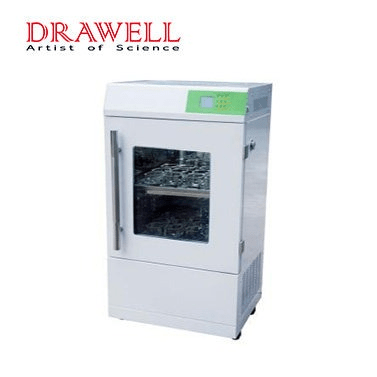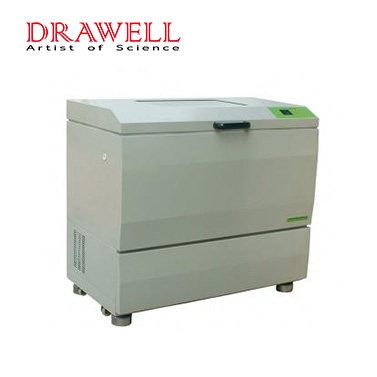What are the Proper Methods of Maintenance and Cleaning for a Shaking Incubator
A shaking incubator, an essential piece of laboratory equipment categorized as a biochemical instrument, serves as a specialized cultivation tool for the growth and propagation of molds and microorganisms. This device creates controlled conditions encompassing temperature, humidity, light, carbon dioxide concentration, oscillation parameters, and more. Its utility spans across diverse fields including life sciences, genetics, agriculture, biomedicine, food industry, and various biochemical studies. Comprising components like a motor, fan, shaking plate, controller, heating tube, and temperature sensor, the shaking incubator comes in different types - benchtop, vertical, and horizontal. This article emphasizes the maintenance and cleaning practices crucial for the optimal functioning of a shaking incubator.

Maintenance of a Shaking Incubator:
Proper care and maintenance play a pivotal role in ensuring the shaking incubator's operational efficiency and longevity.
Regular checks, ideally every three months during operation, are imperative. Inspect fuses, control elements, fastening screws, and assess the presence of moisture or debris near the motor and controls.
Grease the transmission part's bearings every six months, replenishing approximately one-third of the bearing space. A preliminary grease fill is done at the manufacturer's end.
Routine usage results in natural wear and tear. Unusual noises from the motor or compressor indicate potential issues. Seek guidance from the manufacturer for professional advice and resolution.
Prevent continuous start-ups of the compressor to prolong its lifespan.

Cleaning a Shaking Incubator:
Surface Cleaning
Utilize detergent to clean the exterior of the shaking incubator. For disinfection, consider using quaternary ammonium. Wipe the surface with a damp cloth and mild detergent, followed by thorough drying with a clean cloth. Inside and outside surfaces of the glass door can be cleaned with a soft cloth and mild detergent solution, ensuring no residue remains.
Internal Cleaning
Avoid high-pressure water sprays for internal cleaning to prevent damage to critical components. Post-cleaning, drain any liquids properly, taking care not to expose the bottom drive system or electrical elements to excess moisture.
Surrounding Area Maintenance
Maintain an unobstructed space around the shaking incubator for efficient heat dissipation. Regularly clean the vicinity, including the floor and nearby regions, to ensure a pollution-free environment. Establish a cleaning schedule, keeping detailed records of cleaning activities. In case aggressive floor cleaners are used in the lab, promptly wipe off any spills on the equipment.
Cleaning the Shaker
For broken shaker flasks or leaked medium, remove the shaker plate to facilitate proper cleaning. When dealing with broken glass, follow safety protocols by wearing protective gloves and meticulously removing fragments. Disinfect affected parts with a cloth soaked in disinfectant. Always use a soft cloth and mild detergent for cleaning the shaker and its components, employing disinfectant like quaternary ammonium for effective sterilization.
Conclusion
Maintaining and cleaning a shaking incubator is pivotal to its reliability and operational excellence. Regular checks, appropriate lubrication, and adherence to cleaning protocols ensure the longevity and effectiveness of this essential laboratory equipment.
- Sanat
- Doğa
- El sanatları
- Dans
- İçecekler
- Film
- Kondisyon
- Gıda
- Oyunlar
- Bahçıvanlık
- Sağlık
- Ev
- Edebiyat
- Müzik
- Networking
- Diğer
- Parti
- Din
- Alışveriş
- Spor Dalları
- Tiyatro
- Yaşam
